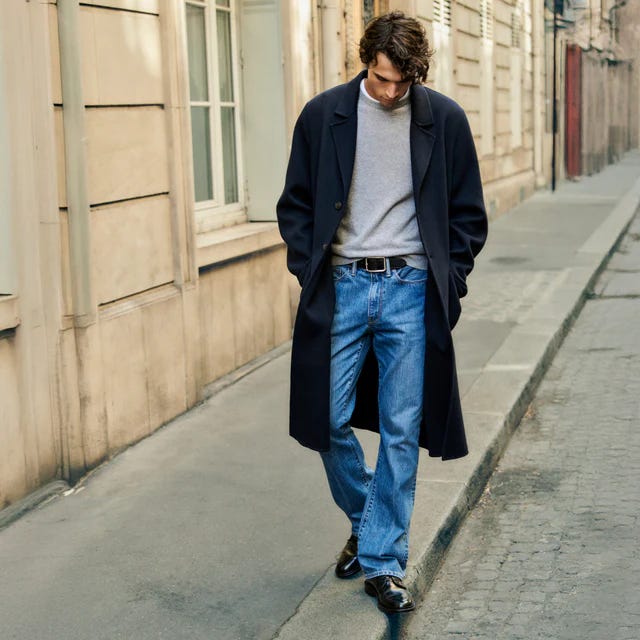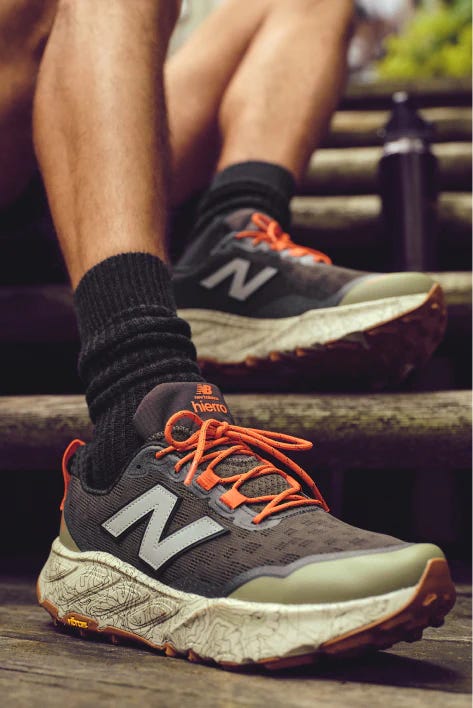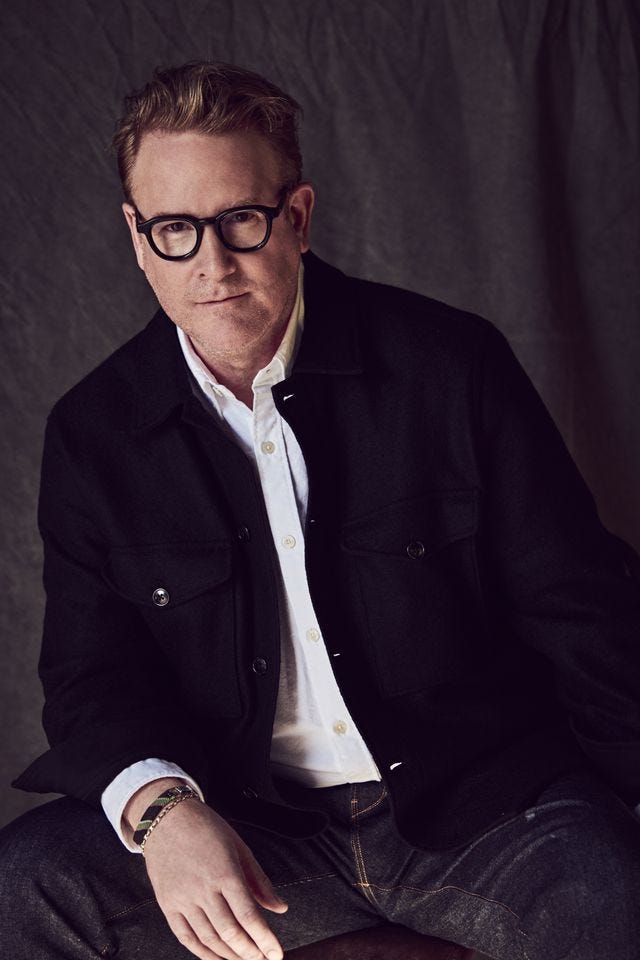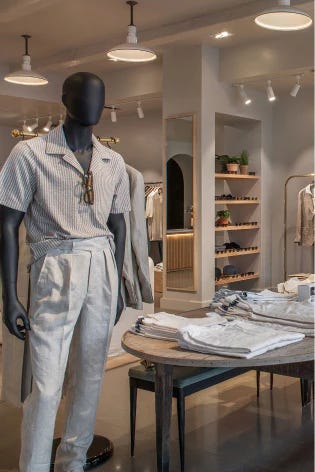Todd Snyder and the State of American Menswear
"I look at clothes as a lifetime investment."
Today’s letter is via our intrepid Menswear Editor, John Jannuzzi.
If you’re having a conversation about American designer menswear, somebody is going to bring up Todd Snyder. Or at least, they should. Snyder founded his eponymous label in 2011 after a successful design career at Ralph Lauren, Gap, and as the SVP of Menswear at J.Crew. That makes for an impressive resumé, so it’s no wonder his own label is a success.
As he put it to me a few weeks ago, “...if you want to be the best, learn from the best.” This sage advice came from his father, and frankly, I wish more designers would keep this in mind. His label sits at the upper end of contemporary brands, boasting fine craftsmanship, some otherworldly materials, and evolved timelessness. All while remaining relatively accessible.
On September 13, the menswear flock herded themselves into the American Eagle Outfitters HQ (AEO purchased Snyder in 2015) to see what he and his team had dreamed up for Spring/Summer 2026. The attendees, who included major editors, influencers, writers, and celebrities, are proof enough of his place in the American Fashion landscape.
The show notes promised “a sartorial postcard from La Buena Vida — a celebration of effortless luxury and the art of living well.” Snyder’s dispatch from the good life drew from a host of influences: old Havana, ‘80s Miami, and clotheshorses of the mid-century.
What followed was a parade of enviable outfits, delivering on the sunny references with roomy silhouettes, resort-friendly colors, and patterns. Of particular note was the tailoring, which featured shimmer and sheen, as well as the occasional jacquard print.
Across the board, though, Snyder pushed his envelope this season as if to convince men to take a few more risks than usual. There will no doubt be plenty of “safe” things on offer come Spring 2026, but there’s more than enough to raise an eyebrow (positively) here.
“Living well,” as mentioned in this season’s notes, is a fitting descriptor for his collections. He’s a master of sportswear and has certainly found his footing in suiting. His outerwear is handsome — sublime, even. (We spoke at length about coats, which happens.) His point of view and skill have brought him far. Far enough that I’d bargain he could build a true empire, in the vein of Ralph Lauren, Calvin Klein, or Donna Karan. But we’ll get to that later.
He’s also exceedingly pleasant to talk to, as I found out over a chat where we touched on everything from Kansas City to building an empire to, of course, coats. (I love coats. My true weakness.)
Below is part of our long and meandering conversation. (Todd, if you’re reading this, sorry for yapping.)
‘Til next time,
John Jannuzzi: When you were younger, how did you get into this whole world of style and clothes?
Todd Snyder: I discovered Ralph [Lauren] at a young age. I went to his store in Kansas City and was just so intrigued by his retail experience, as far as walking through an amazing, decorated store. So I was always really inspired by that. And then when I read his book, I thought: “I wanna do that as a career.” By that point, I admired the brand. For me, I was young and it was expensive, but reading the book really gave me the idea about being a designer.
JJ: I caught something about your move to New York City after college and some advice your grandmother had given you — can you explain that a little more?
TS: I was leaving to go to New York, and I remember my grandmother asking me what I was gonna do in New York City. You know, my family was all in Iowa. And, I told her I was gonna be a fashion designer — I'm gonna go work in the fashion industry. She's said that makes a lot of sense. “Snyder” in Dutch means tailor. And then, and then it all made sense.
JJ: Ah! So it was fated from the beginning, you had no choice.
TS: To be honest, I was just so relieved because growing up in Iowa, I just felt like an outcast. It was very much like, “Oh, he's into clothes or whatever,” and just never felt like I was normal. I was very quiet about it. But I knew I wanted to do it. And then, when she told me that, I was, “Oh gosh, this is amazing.” I wish she had told me that ten years prior, but it was a great way to find out. I had already learned how to sew while working in a tailor shop, so it all just came together.

JJ: That kind of real-world experience really ends up rounding things out and giving you a more realistic point of view.
TS: Yeah, it’s kind of like learning to cook from a professional. You kind of start to believe in your own skills. When you’re self-taught and learning from someone else and learning their technique, it’s a craft. It takes time to build, but there are different philosophies around tailoring and fit. It’s not super black and white. It’s an art.
JJ: So obviously, you know, you graduated from college, moved to the city, and started your career. But when did you decide to be Todd Snyder the brand?
TS: I worked in the industry for 20 years — my last gig was at J.Crew as the head of men's. And we opened The Liquor Store, and it really took off. That's when I realized I had a chance to do something on my own. Because up until then, I was happy working for other people, and when I realized I had this platform — I was doing collaborations, doing all the deals, I was really kind of in charge of all of men's — I realized, gosh, I could go do this on my own. I had saved up enough money. I turned 40 that year, and I thought, I'd better do this now, or forever hold my peace.
JJ: It all comes full circle in the end, because you’ve got the Liquor Store now for Todd Snyder. It’s like old stomping grounds for you.
TS: That's where it all began. I mean, I got an opportunity to work for Mickey Drexler. He introduced us to Andy Spade, and I got to meet with him, and it just really helped solidify my belief that the vision I had was different. It was taking a lot of the traditional menswear but giving it my own kind of spin, and the spin is always making sure that there's a modern edge to what we do, and making sure that there's something different.
The Dylan is a great example — I always knew I wanted to do a leather jacket. I wanted it to be the right fit, the right material. It’s made in Italy, it’s a modern take on a classic trucker jacket, but done in a luxurious way. My edge was always gonna be little tweaks here and there, and then adding this luxury element to everything I do. That’s always been the blend — a little bit of heritage, a little bit of modernity, a little bit of luxury.
In the beginning, I thought about how to make a chino new. Why don't we use this Japanese selvedge chino fabric and do a classic military fit, but a little bit more of a wider leg, and that's become one of our best-selling items. Same thing with the Oxford shirt.
JJ: I think that’s what a lot of people who know the brand have come to appreciate it for. It’s got that timeless silhouette but with the hint of edge.
TS: Well, I look at clothes as a lifetime investment. I have shoes in my closet that I've had for 15 years, meaning my Alden Oxford Shoes. I have the same Dylan that I did 15 years ago. And you know fashion comes and goes, but style endures. Having those great foundations — whether it's a great pair of jeans, a great suit, a great trench coat, or a great shirt — those are the things you keep in your closet forever, and then you layer on fashion trends as they come and go. It's really kind of that classic style that endures, and those are the things that stay with you for a lifetime. That’s how I’ve always looked at fashion.

JJ: Did you guys launch with the Dylan in 2011?
TS: I started with the Dylan, the Selvedge Oxford, the Selvedge Chino…the Dylan, I think, is our number one item that we sell.
JJ: It’s like … taste the rainbow, you can get the Dylan in any color you want. The cut is so good, and trucker jackets just hit the right spot on the waist. They’re universally appealing. And yes, it’s Italian leather, but it’s also an inherently American look at the same time. I guess it’s called Dylan for a reason.
TS: You look through history books, whether it was Newman or Bob Dylan or whatever. I learned a lot of this at Ralph — style endures, and that really transcends fashion. And that to me is what was important: What is the ultimate closet for the guy? How do you distill it down and make it easy for the guy to shop?
JJ: Except for Dylan, are there any pieces you think all guys should have in their closet?
TS: I always recommend a navy suit. You can wear it as trousers, or wear it as a suit, or break it up as a sport coat or a blazer. That becomes one of the most versatile things in your closet because you can wear it in so many ways. And then always layering a great pair of shoes, whether it’s an Alden shoe or a great pair of sneakers.
JJ: Obviously, tailoring is really important to you. If you had to pick a favorite from your suits and tuxedos, is there a specific silhouette that you’re really feeling these days?
TS: I’m much more into the relaxed suits. Double-breasted in general. I remember double-breasted suits from the '90s, and I would say they’re back. And then our Madison suit, which is a nice in-between. It has a wider lapel and is a little more relaxed without being super big.
JJ: Thinking about the brand in general, was there a point that was like, your first real positive moment? Like “it’s happening,” kind of?
TS: I think my biggest one was the American Eagle acquisition. Meeting Roger Markfield, who was the president at the time, and then Jay Schottenstein, who is the CEO. We talked to each other for two years, and then they decided to buy the company. And that, to me, was amazing — a dream come true. And then when we opened our first store, that really gave us proof of concept. (And I think once we hit 100mm, that solidified that we’re here to stay.)
JJ: I remember the American Eagle news coming out. I think the entire industry was just so excited about that because it doesn't happen very often. Especially for brands that young.
TS: It does prove that hard work pays off. It took me 20-plus years to learn as much as I could before I did my own thing. And that's the thing I always tell younger people who want to start their own brand. You have to learn as much as you can and work with others, having them teach you. That was the best advice my dad ever gave me: “If you want to be the best, work for the best.” To work for somebody else and learn from them and have them teach you the ropes was the best advice I ever had.
JJ: Collabs have become such a tired thing. But I think the ones that you’ve had stand out as being successful. The Champion stuff has been around forever, and you have New Balance and plenty more. But when you’re thinking of collabs to approach, how do you identify opportunities?
TS: I always looked at it as a store owner and thought about what makes sense. What's going to complement what we have and not take away? Then the authenticity. Champion’s been around for over 100 years. And they invented the sweatshirt. And Timex invented the watch. And I thought, this is a cool story to partner with brands that are experts and originators. I wanted something that was real, and doing something with Champion is a lot cooler than me coming up with a “Todd Snyder Sport.” It’s two experts: the originator and then me, giving my point of view.
As we wound down our conversation, we talked about his fleet of stores — each with their own regional bend, designed to “surprise and delight.” It’s here when Snyder shared one of his favorite parts of the business and the brand. I include it here because style and shopping is often distilled into algorithms and data, but as you hopefully know, it can be so much more.
“I think my favorite thing about the brand that always gets me teary-eyed is when I see a father and son shopping. And the dad is shopping for the son’s first suit. To me, well, A. it kills me and B. just reaffirms that we’re doing things right. That’s what I remember about Ralph Lauren: it transcends generations. Jay [Schottenstein] was telling me, ‘I even have grandsons who are wearing your stuff.’ And it does remind me of the days when I was shopping at Ralph, and that for me is an awesome feeling.”











Yep great stuff. These look great.
Todd Snyder is one of the brands that falls under the category of "Wardrobe Replacement" for me. You can literally get anything and everything for your full wardrobe from them. I agree with Sid Mashburn and a few others come to mind.
(I also am heavily biased for TS as my wedding tux, my wedding watch, and about half my wardrobe has come from the brand!!)